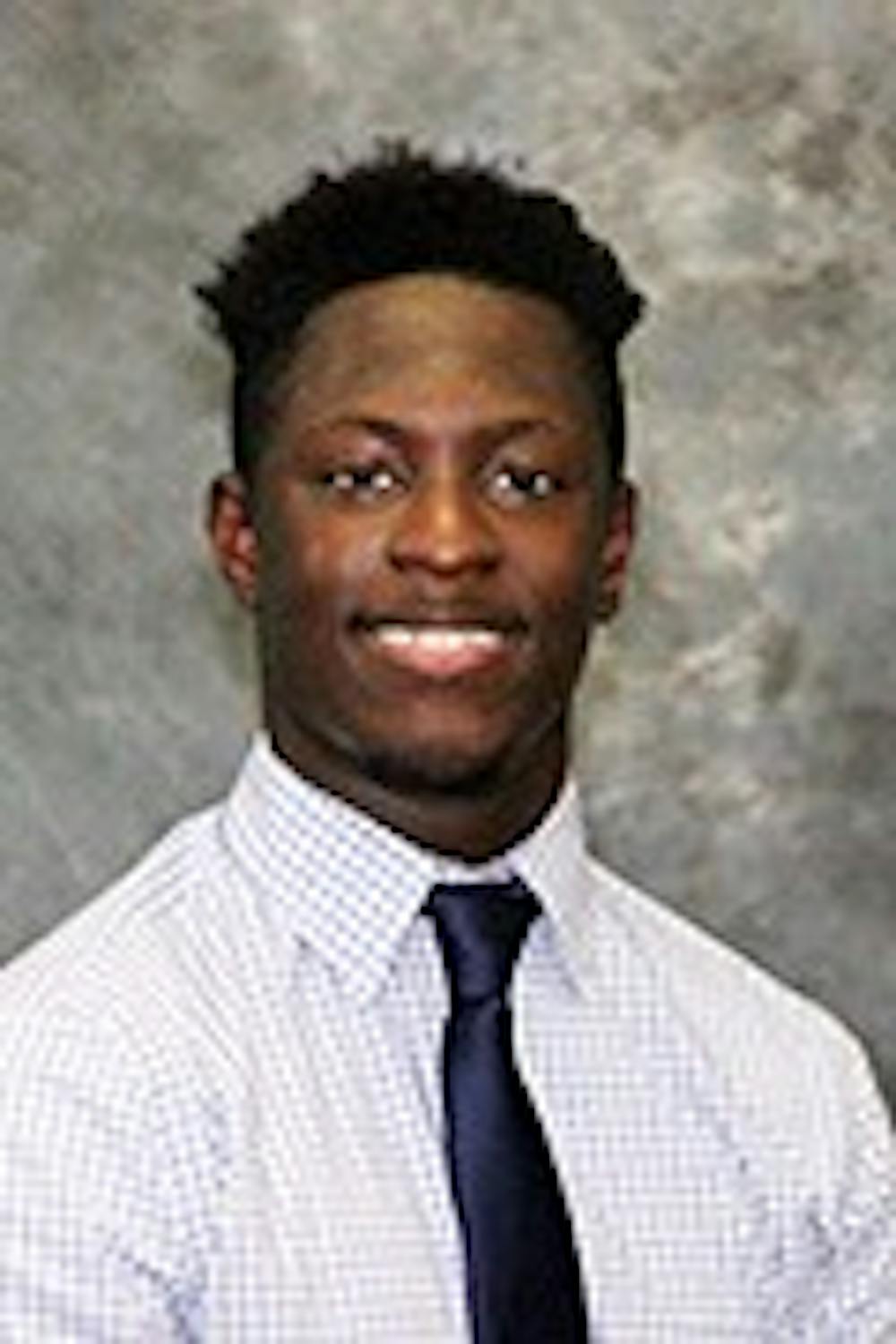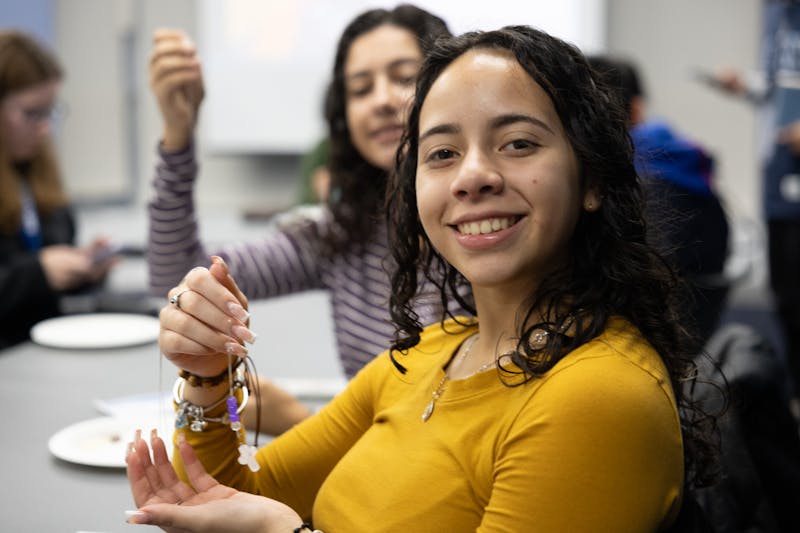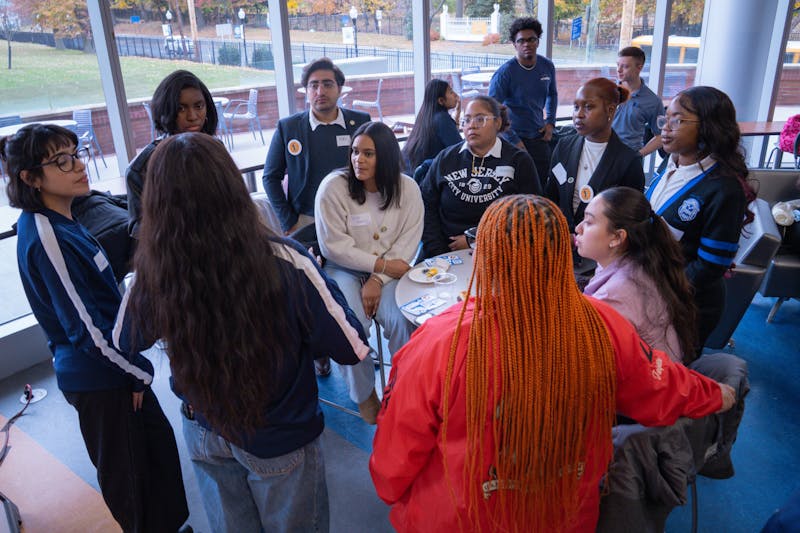Meteorologist Michael Rizzo from News 12 in Bronx and Brooklyn, New York gave a memorable presentation to members of the Kean student body at Hennings Hall Room 113, Thursday, Oct. 26. The speech included information about Rizzo's occupation, the importance of working hard to achieve a degree, and the significance of making students' dreams into realities.
The Louis Stokes Alliance for Minority Participation (LSAMP) organization sponsored the event. A PowerPoint presentation was given to a filled lecture hall of over 70 students and faculty about Rizzo's daily lifestyle of working as a professional meteorologist and what a full day consists of on the job.
Rizzo is a meteorologist at the primary News 12 station in New York. He graduated from Kean University with a bachelor's degree in Earth Science/Meteorology in 2014 and with a master's degree in Communication in 2016. While starting his career with the Connecticut News 12 branch in July 2014 as a freelance meteorologist, Rizzo's effort and hard work granted him a spot as Connecticut's weekend meteorologist in October 2015.
While working at the Connecticut branch, Rizzo occasionally served his time in doing weather broadcasts for the Bronx and Brooklyn areas in New York. He was also the meteorologist for News 12's branch in Long Island, until obtaining the full-time job as the News 12 Meteorologist for the Bronx and Brooklyn areas this past summer.
Rizzo started his presentation by introducing himself to an audience filled with inquisitive ears excited to hear about the in-and-outs of Rizzo's place of work. He spoke on various details about working for News 12, including his history of working for the corporation, his internship experiences with News 12 and WCBS in New York, and his daily commute to the station in the eastern-most part of New York as a resident of Staten Island.
"I used to drive an hour and a half, almost two hours to Connecticut every day to do work there. I used to drive to Long Island, which, in traffic, can take up to three hours, so I was dedicated enough to do this because of the gift that I had earned for myself, for working close to home," Rizzo mentioned in his speech.
Rizzo mentioned his everyday habits of arriving to his job including enjoying his daily cup of coffee while reviewing the latest cosmic patterns, data and algorithms needed to predict forecasts on a computerized radar. Also, he mentioned the many pieces of technology used to create his own daily broadcasts for his news channel, which is used every morning.
"Every graphic that the audience sees, typically, I make, whenever people watch television weather," Rizzo said. "Everything that viewers see, represents the story that I am trying to tell my audience."
Rizzo also spoke on the daily process of going on air, from the vanities of television makeup and the technical setup that broadcasters must undergo before the cameras turn on.
"At just about five in the morning, I go live. So, in a timeline, at 2:15 to 3 a.m., I am in a diner. At 4 a.m., I arrive at work and 5 a.m., I am live. Before I go live, I put on makeup, I go through hair, and then I get ready to go live," Rizzo mentioned. "I put on my suit, turn on my wired microphone where my producers and directors speak to me directly as I am on air, get a copy of the public reading, and get in front of the green screen for the show."
In interactive fashion, Rizzo then invited two audience members up to the stage, informing them in demonstrating how green screen presentations work. As the two students held up the green drape, the meteorologist gave an impromptu weather report and demonstration of the on-camera work that he does every morning.
Soon after, Rizzo presented on the LSAMP organization's role in creating his interest for meteorology, as well as acknowledged its significance in building students' passion for research through the support that is given to students. He then proceeded to recall his first moments in learning about the program and its assistance it provides to students with an interest in the sciences.
Rizzo then talked about his first encounter with LSAMP, where he and a friend were approached by a member of the program who mentioned funding for research plans. "What this program did was give students money to support research, conference travel, and the mission that researchers do, which is to learn and educate yourself," Rizzo said.
The meteorologist later skipped to slides pertaining to his former research projects supported by the LSAMP program, such as the study of an infamous Japanese earthquake in the year 2011 and a project that looked into the way that rain impacted ground water in relation to the role mountains play in the creation of storms.
"We were able to take this research to Rutgers University in Newark, New Jersey, [which has] a partner program for Kean's LSAMP program, and presented our work there with other students across our network in LSAMP. At that point, the program paid for us to go to the conference with the other school, and have this experience," Rizzo said.
"At one point, I was driven to do research by the program, and for my last assignment, I decided to focus on an experience to study the clouds. This research project, called COMPOSE, and my mentor, Dr. Croft, helped me to come up with an acronym that meant Cloud Observations and Morphology for Physical and Operational Storm Environments. It was designed to be a storm chasing experience that could even pinpoint where tornadoes would develop. Though I was in the middle of Wyoming, I was able to chase the storm to understand the mechanism behind the formation of these storms," Rizzo mentioned.
Rizzo's efforts did not go unnoticed, as he later told his audience that his involvement in storm chasing would land him his first gig as a freelance meteorologist with News 12. As the event concluded, Rizzo spoke on the importance of working hard as an undergraduate student and that the work and experiences had in college can translate to the professional level.
"My biggest goal today was to encourage students to take action to understanding that there is more to life than learning and just sitting in class. I think sitting in class is one element, but using what you get in class somewhere in life that may mean something to other people, is the mark that I wanted to leave on this presentation," Rizzo said. "You cannot get anywhere in life by just sitting and following instructions. You have to create something new, push it forward, and research it!"







